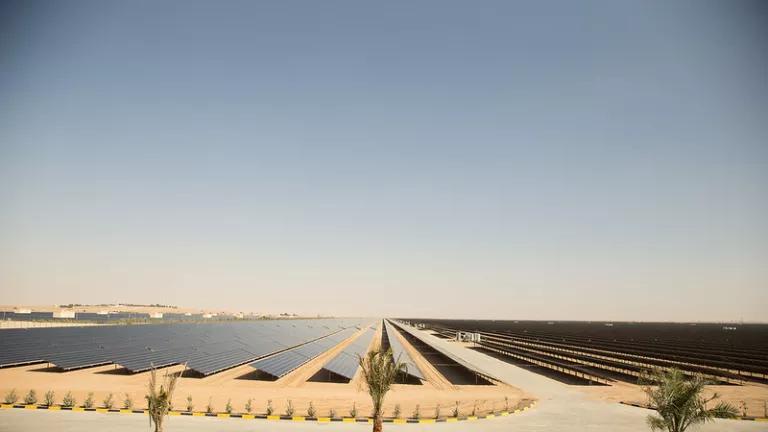
Clearcutting for biomass in Pärnu County, Estonia
At COP27 this week, countries—including the EU and UK—launched the Forests and Climate Leaders’ Partnership to halt and reverse forest loss and land degradation by 2030.
However, a report released today by Trinomics for the Natural Resources Defense Council (NRDC) reveals that at the same time, these countries are giving more money than ever to bioenergy, which chops down our planet’s precious forests and burns them for electricity.
Indeed, while some countries in Europe, including the UK, have classified bioenergy as “renewable” based on the idea that trees grow back—and are increasingly relying upon it to meet net zero goals—it’s actually one of the dirtiest energy forms around. It destroys wildlife-rich forests around the world (including the US, Canada, Romania, and Estonia); releases the carbon the trees have absorbed over their lifetime; and prevents the trees from sequestering carbon during the timeframe relevant to combat climate disaster, worsening climate change. In Europe, biomass harvesting has been identified as a key driver in the loss of the forest carbon sink. Bioenergy also harms vulnerable communities of colour in the US Southeast.
Here are 3 takeaways from the report:
1. Countries are doubling down on bioenergy, despite increasing evidence of its risks – This report shows that many governments are doubling down on bioenergy and making it central to their plans to tackle climate change, despite its many risks to people and the planet. The 10 European countries analysed spent over €6.3 billion on subsidies for bioenergy in 2021–more than any previous year and an almost 33% increase from 2015. The report found that the UK remains Europe’s top subsidiser of bioenergy, spending €2.1 billion in 2020, mainly on Drax Power Station–the UK’s #1 polluter. Germany followed close behind, spending €1.7 billion in 2020. And the Netherlands took the third spot, with €856 million in bioenergy subsidies–almost tripling its subsidies since 2015.
| Country | 2015 bioenergy subsidy (millions of euros) | 2021 bioenergy subsidy (millions of euros) |
| United Kingdom | 1,269 | 2,159 |
| Germany | 1,672 | 1,724 |
| Netherlands | 288 | 856 |
| France | 375 | 725 |
| Spain | 401 | 496 |
| Poland | 251 | 166 |
| Denmark | 55 | 108 |
| Austria | 270 | 104 |
| Finland | 69 | 15 |
| Sweden | 10 | 3 |
2. The public is footing an increasingly BIG bill for a fake renewable that’s harming our planet – As European countries increase bioenergy subsidies—often in significant ways—billpayers will be footing increasingly large bills. That’s because these subsidies are paid for either by government money (i.e. from taxes) or by a surcharge on peoples’ energy bills. Either way, the public is footing the bill for an industry that claims to be green while it hacks down the world’s forests and then sets them on fire. And there’s no end to these costs in sight. Because bioenergy’s single biggest cost is the fuel it buys (i.e., wood pellets), subsidies won’t help make bioenergy financially independent in the long-term. Indeed, there’s little chance bioenergy will ever be cheap enough to survive without the lifeline of subsidies. This is much different than wind and solar, which are now so cheap in countries like the UK they are almost subsidy-free.
3. These subsidies could be spent on technologies that would REDUCE people’s energy bills AND curb emissions – This money would be far better spent on technologies that are consistently decreasing in price, help people cut their energy bills and actually reducing greenhouse gas emissions. If the UK agrees to fund the installation of carbon capture and storage (CCS) at Drax Power Station, the subsidies to pay for it could add £3.8 billion to homeowners’ energy bills over 15 years. If this money was instead spent on home insulation, it could insulate more than 2.5 million homes in the UK, ultimately making them more efficient and actually saving them money by reducing their energy bills. It would also cut the UK’s greenhouse gas emissions by 1.1 million tonnes per year. And homeowners would begin to earn back their investment after four years at most given that houses with more insulation have lower energy bills. Similarly, in the Netherlands, redirecting €856.5 million of existing biomass subsidies could insulate around 3.2 million houses, a quarter of all the country’s households (assuming a 30% subsidy, as currently in place via the ISDE). The energy saved through insulation could save households €132 per year and would cut the Netherlands’ total emissions by around 1 million tonnes.
The bottom line is that the commitments the EU, UK and other countries are making regarding increased forest protection at COP27 mean nothing if they continue relying upon bioenergy to meet net zero goals.
Forests are our best defence against climate change, absorbing one-third of anthropogenic greenhouse gas emissions every year. To continue to cut them down in a misguided attempt to reduce emissions, is insanity at its best. It is made worse by the fact that hardworking families are paying for it. And the realisation that this money could instead be spent on technologies that would actually reduce energy bills and curb emissions makes the whole thing seem like a cruel joke.
As the world’s leading scientists have stated, it’s time for “transformative change”—not business as usual. European countries must stop giving in to industry, and instead spend their citizens’ money on efforts that will actually decrease climate change. The good news is we have technologies that will do just that at our fingertips. It’s time to use them.




